college+of+e
-
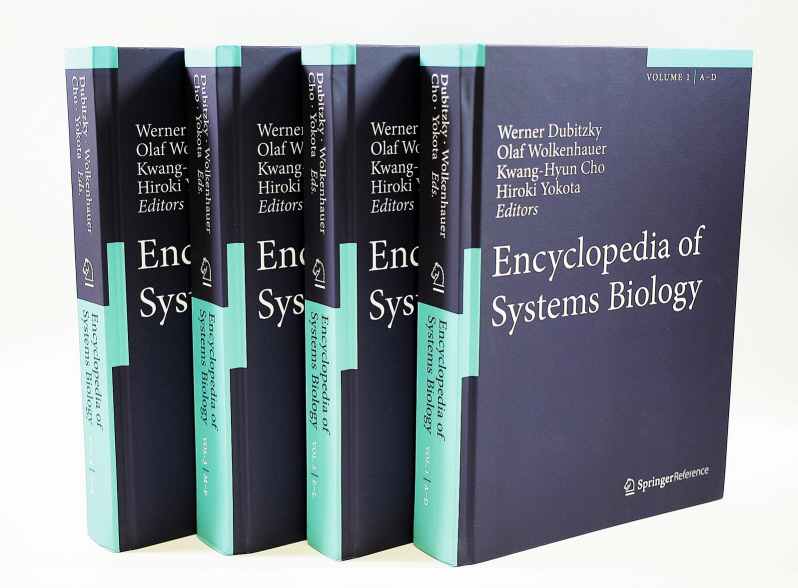 Professor Kwang-Hyun Cho publishes Encyclopaedia of Systems Biology
Professor Kwang-Hyun Cho
KAIST Biological and Brain Engineering Department’s Professor Kwang-Hyun Cho edited the Encyclopaedia of Systems Biology with three scholars, all experts of Systems Biology in England, Germany and the United States. It is rare that a Korean scientist edits a world renowned academic science encyclopaedia.
The Encyclopaedia, published by the New York office of Springer Verlag, was a grand international project five years in the making by 28 editors and 391 scientists with expertise in Systems Biology from around the world. The Encyclopaedia compiles various research areas of Systems Biology, the new academic paradigm of the 21st century through the integration of IT and BT, comprehensively on 3,000 pages in 4 four volumes.
Professor Kwang-Hyun Cho, who led this international project, majored in electrical engineering and pioneered the field of Systems Biology, the integrated study of biological sciences and engineering, as a new integrated field of IT since the 1990s. The professor has achieved various innovative research results since then. Recently he has investigated “kernel,” an evolutionary core structure in complex biological networks and developed a new cancer treatment through the state space analysis of the molecular network of cancer cells. His work was published in Science Signalling, a sister journal of Science, as a cover story several times, and contributed to foundational research as well as commercialisation of the integrated fields of IT and BT.
2013.08.27 View 11213
Professor Kwang-Hyun Cho publishes Encyclopaedia of Systems Biology
Professor Kwang-Hyun Cho
KAIST Biological and Brain Engineering Department’s Professor Kwang-Hyun Cho edited the Encyclopaedia of Systems Biology with three scholars, all experts of Systems Biology in England, Germany and the United States. It is rare that a Korean scientist edits a world renowned academic science encyclopaedia.
The Encyclopaedia, published by the New York office of Springer Verlag, was a grand international project five years in the making by 28 editors and 391 scientists with expertise in Systems Biology from around the world. The Encyclopaedia compiles various research areas of Systems Biology, the new academic paradigm of the 21st century through the integration of IT and BT, comprehensively on 3,000 pages in 4 four volumes.
Professor Kwang-Hyun Cho, who led this international project, majored in electrical engineering and pioneered the field of Systems Biology, the integrated study of biological sciences and engineering, as a new integrated field of IT since the 1990s. The professor has achieved various innovative research results since then. Recently he has investigated “kernel,” an evolutionary core structure in complex biological networks and developed a new cancer treatment through the state space analysis of the molecular network of cancer cells. His work was published in Science Signalling, a sister journal of Science, as a cover story several times, and contributed to foundational research as well as commercialisation of the integrated fields of IT and BT.
2013.08.27 View 11213 -
 Chemistry World: Interview with Professor Cafer Yavuz of EEWS Graduate School
Professor Cafer Yavuz of the Graduate School of EEWS (energy, environment, water, and sustainability) at KAIST had an interview with the Chemistry World, the print and online magazine issued by the Royal Society of Chemistry, the largest organization in Europe for advancing the chemical sciences. The link below is the article published by the magazine:
http://www.rsc.org/chemistryworld/2013/08/interview-cafer-yavuz-carbon-dioxide-capture
2013.08.07 View 9031
Chemistry World: Interview with Professor Cafer Yavuz of EEWS Graduate School
Professor Cafer Yavuz of the Graduate School of EEWS (energy, environment, water, and sustainability) at KAIST had an interview with the Chemistry World, the print and online magazine issued by the Royal Society of Chemistry, the largest organization in Europe for advancing the chemical sciences. The link below is the article published by the magazine:
http://www.rsc.org/chemistryworld/2013/08/interview-cafer-yavuz-carbon-dioxide-capture
2013.08.07 View 9031 -
 Chin-Wan Chung, a professor of computer science, received the best paper award from ACM
The Korea Times reported on July 12, 2013 that Chin-Wan Chung, a professor of computer science at KAIST, won the best paper award by the Association for Computing Machinery (ACM). For the article, please click the link:
http://koreatimes.co.kr/www/news/people/2013/07/178_139132.html
2013.07.15 View 8435
Chin-Wan Chung, a professor of computer science, received the best paper award from ACM
The Korea Times reported on July 12, 2013 that Chin-Wan Chung, a professor of computer science at KAIST, won the best paper award by the Association for Computing Machinery (ACM). For the article, please click the link:
http://koreatimes.co.kr/www/news/people/2013/07/178_139132.html
2013.07.15 View 8435 -
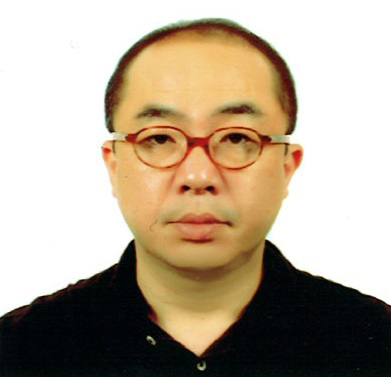 Prof. Song Chong received the IEEE William R. Bennett Prize Paper Award
The IEEE (Institute of Electrical and Electronics Engineers) Communications Society (ComSoc), a renowned global network of professionals with a common interest in advancing communications technologies, has announced the winner of the 2013 William R. Bennett Prize in the field of communications networking. The prize was given to a Korean research team led by Song Chong, Professor of Electrical Engineering at KAIST and Injong Rhee, Professor of Computer Science at North Carolina State University. In addition, Dr. Minsu Shin, Dr. Seongik Hong, and Dr. Seong Joon Kim of Samsung Electronics Co., Ltd. as well as Professor Kyunghan Lee from Ulsan National Institute of Science and Technology were recognized for their contribution.
The William R. Bennett Prize for communications networking has been awarded each year since 1994 in recognition of the best paper published in any journal financially sponsored or co-sponsored by ComSoc in the previous three calendar years. Only one paper per year is selected based on its quality, originality, scientific citation index, and peer reviews. Among the previous award winners are Robert Gallager of MIT, and Steven Low of the California Institute of Technology, and Kang G. Shin of the University of Michigan.
The Korean research team’s paper, On the Levy-Walk Nature of Human Mobility, was published in the June 2011 issue of IEEE/ACM Transactions on Networking, a bimonthly journal co-sponsored by the IEEE ComSoc, the IEEE Computer Society, and the Association for Computing Machinery (ACM) with its Special Interest Group on Data Communications (SIGCOMM).
In the paper, the research team proposed a new statistical model to effectively analyze the pattern of individual human mobility in daily life. The team handed out GPS (global positioning system) devices to 100 participants residing in five different university campuses in Korea and the US and collected data on their movements for 226 days. The mobility pattern obtained from the experiment predicted accurately how the participants actually moved around during their routines. Since publication, the paper has been cited by other papers approximately 350 times.
The team’s research results will apply to many fields such as the prevention and control of epidemics, the design of efficient communications networks, and the development of urban and transportation system.
The research team received the award on June 10th at the 2013 IEEE International Conference on Communications (ICC) held in Budapest, Hungary, from June 9-13, 2013.
Professor Song Chong
2013.07.06 View 16528
Prof. Song Chong received the IEEE William R. Bennett Prize Paper Award
The IEEE (Institute of Electrical and Electronics Engineers) Communications Society (ComSoc), a renowned global network of professionals with a common interest in advancing communications technologies, has announced the winner of the 2013 William R. Bennett Prize in the field of communications networking. The prize was given to a Korean research team led by Song Chong, Professor of Electrical Engineering at KAIST and Injong Rhee, Professor of Computer Science at North Carolina State University. In addition, Dr. Minsu Shin, Dr. Seongik Hong, and Dr. Seong Joon Kim of Samsung Electronics Co., Ltd. as well as Professor Kyunghan Lee from Ulsan National Institute of Science and Technology were recognized for their contribution.
The William R. Bennett Prize for communications networking has been awarded each year since 1994 in recognition of the best paper published in any journal financially sponsored or co-sponsored by ComSoc in the previous three calendar years. Only one paper per year is selected based on its quality, originality, scientific citation index, and peer reviews. Among the previous award winners are Robert Gallager of MIT, and Steven Low of the California Institute of Technology, and Kang G. Shin of the University of Michigan.
The Korean research team’s paper, On the Levy-Walk Nature of Human Mobility, was published in the June 2011 issue of IEEE/ACM Transactions on Networking, a bimonthly journal co-sponsored by the IEEE ComSoc, the IEEE Computer Society, and the Association for Computing Machinery (ACM) with its Special Interest Group on Data Communications (SIGCOMM).
In the paper, the research team proposed a new statistical model to effectively analyze the pattern of individual human mobility in daily life. The team handed out GPS (global positioning system) devices to 100 participants residing in five different university campuses in Korea and the US and collected data on their movements for 226 days. The mobility pattern obtained from the experiment predicted accurately how the participants actually moved around during their routines. Since publication, the paper has been cited by other papers approximately 350 times.
The team’s research results will apply to many fields such as the prevention and control of epidemics, the design of efficient communications networks, and the development of urban and transportation system.
The research team received the award on June 10th at the 2013 IEEE International Conference on Communications (ICC) held in Budapest, Hungary, from June 9-13, 2013.
Professor Song Chong
2013.07.06 View 16528 -
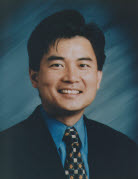 Professor Jay H. Lee to receive the 2013 AIChE CAST Computing in Chemical Engineering Award
Professor Jay H. Lee of Chemical and Biomolecular Engineering Department at KAIST has won the 2013 Computing in Chemical Engineering Award of AIChE"s CAST Division (AIChE, American Institute of Chemical Engineers and CAST, Computing & Systems Technology Division).
The CAST Computing in Chemical Engineering Award, sponsored by The Dow Chemical Company, is annually given to an individual who has made outstanding contributions in the application of computing and systems technology to chemical engineering.Professor Lee has been recognized for his pioneering research contributions for “novel paradigms for much improved and robust model predictive control in industrial processes.” He is currently the Head of Chemical and Biomolecular Engineering Department and Director of Brain Korea (BK) 21 Program at the department. BK21 is the Korean government’s initiative to support the growth of research universities in the nation and foster highly trained master’s and doctoral students as well as researchers.
The CAST Computing in Chemical Engineering Award will be presented to Professor Jay H. Lee at the CAST Division dinner to be held at the AIChE Annual Meeting this November in San Francisco, where he will also deliver the after dinner lecture associated with this award.
2013.06.12 View 12330
Professor Jay H. Lee to receive the 2013 AIChE CAST Computing in Chemical Engineering Award
Professor Jay H. Lee of Chemical and Biomolecular Engineering Department at KAIST has won the 2013 Computing in Chemical Engineering Award of AIChE"s CAST Division (AIChE, American Institute of Chemical Engineers and CAST, Computing & Systems Technology Division).
The CAST Computing in Chemical Engineering Award, sponsored by The Dow Chemical Company, is annually given to an individual who has made outstanding contributions in the application of computing and systems technology to chemical engineering.Professor Lee has been recognized for his pioneering research contributions for “novel paradigms for much improved and robust model predictive control in industrial processes.” He is currently the Head of Chemical and Biomolecular Engineering Department and Director of Brain Korea (BK) 21 Program at the department. BK21 is the Korean government’s initiative to support the growth of research universities in the nation and foster highly trained master’s and doctoral students as well as researchers.
The CAST Computing in Chemical Engineering Award will be presented to Professor Jay H. Lee at the CAST Division dinner to be held at the AIChE Annual Meeting this November in San Francisco, where he will also deliver the after dinner lecture associated with this award.
2013.06.12 View 12330 -
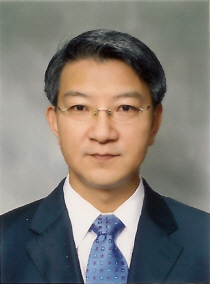 Distinguished Professor Sang-Yup Lee received 2013 Amgen Biochemical Engineering Award
- Previous award winners are world-renowned scholars of biochemical engineering including James Bailey, Michael Shuler and Daniel Wang
KAIST Chemical and Biomolecular Engineering Department’s Professor Sang-Yup Lee has been selected to receive the 2013 Amgen Biochemical Engineering Award. The award ceremony will take place this June at the International Biochemical and Molecular Engineering conference in Beijing, China.
The Amgen Biochemical Engineering Award was established by Amgen, a world renowned American pharmaceutical company, in 1993. Amgen awards leading biochemical engineers every two years. The first Amgen award recipient was James Bailey of the California Institute of Technology (Caltech) in 1993. Since then leading engineers that are sometimes called “founding fathers of biochemical engineering” have received the award including MIT Professor Daniel Wang and Michael Shuler of Cornell University.
The first nine award winners were Americans and in 2011 Jens Nielson of Chalmers University of Technology, Sweden, received the Amgen award as a non-American. Professor Sang-Yup Lee is the first Asian to receive the award.
The Amgen award panel said, “Professor Lee made an incredible contribution to the fields of synthetic biology and industrial bioengineering by finding chemical material, fuel, protein and drug production and system bioengineering through metabolic engineering of microorganisms.”
Professor Lee is an expert in metabolic engineering of microorganisms and contributed to the development of system metabolic engineering and system bioengineering. Furthermore, he developed various medical and chemical products and processes which were then applied to synthesise strains of succinate, plastics, butanol and nylon.
Professor Lee is a fellow of the Korean Academy of Science and Technology and National Academy Engineering of Korea; an international member of National Academy of Engineering (US); a former fellow of the American Association for the Advancement of Science; a member of the American Institute of Chemical Engineers, the American Industrial Microbiology Society and American Academy of Microbiology. He is currently Head of Global Agenda Council on Biotechnology and is world renowned for his work in biotechnology field.
2013.04.30 View 10210
Distinguished Professor Sang-Yup Lee received 2013 Amgen Biochemical Engineering Award
- Previous award winners are world-renowned scholars of biochemical engineering including James Bailey, Michael Shuler and Daniel Wang
KAIST Chemical and Biomolecular Engineering Department’s Professor Sang-Yup Lee has been selected to receive the 2013 Amgen Biochemical Engineering Award. The award ceremony will take place this June at the International Biochemical and Molecular Engineering conference in Beijing, China.
The Amgen Biochemical Engineering Award was established by Amgen, a world renowned American pharmaceutical company, in 1993. Amgen awards leading biochemical engineers every two years. The first Amgen award recipient was James Bailey of the California Institute of Technology (Caltech) in 1993. Since then leading engineers that are sometimes called “founding fathers of biochemical engineering” have received the award including MIT Professor Daniel Wang and Michael Shuler of Cornell University.
The first nine award winners were Americans and in 2011 Jens Nielson of Chalmers University of Technology, Sweden, received the Amgen award as a non-American. Professor Sang-Yup Lee is the first Asian to receive the award.
The Amgen award panel said, “Professor Lee made an incredible contribution to the fields of synthetic biology and industrial bioengineering by finding chemical material, fuel, protein and drug production and system bioengineering through metabolic engineering of microorganisms.”
Professor Lee is an expert in metabolic engineering of microorganisms and contributed to the development of system metabolic engineering and system bioengineering. Furthermore, he developed various medical and chemical products and processes which were then applied to synthesise strains of succinate, plastics, butanol and nylon.
Professor Lee is a fellow of the Korean Academy of Science and Technology and National Academy Engineering of Korea; an international member of National Academy of Engineering (US); a former fellow of the American Association for the Advancement of Science; a member of the American Institute of Chemical Engineers, the American Industrial Microbiology Society and American Academy of Microbiology. He is currently Head of Global Agenda Council on Biotechnology and is world renowned for his work in biotechnology field.
2013.04.30 View 10210 -
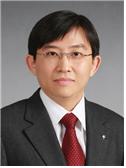 Professor Sang-Ouk Kim Interviewed with Arirang TV on April 15, 2013
Professor Sang-Ouk Kim from the Department of Materials Science and Engineering made an appearance on April 15, 2013 at a morning show called “Korea Today” on Arirang TV, an English-language network based in Seoul, South Korea.
Professor Kim introduced his research on the development of flexible semiconductor technology. If commercialized, Professor Kim added, the technology would expedite the common use of wearable computers including mobile devices as well as the development of bio-medical implanted and wireless telemetry bio-devices. To play the video, please click the link below (00:25:00): http://www.arirang.co.kr/Player/TV_Vod.asp?HL=X&code=VOD&vSeq=68872
2013.04.30 View 10348
Professor Sang-Ouk Kim Interviewed with Arirang TV on April 15, 2013
Professor Sang-Ouk Kim from the Department of Materials Science and Engineering made an appearance on April 15, 2013 at a morning show called “Korea Today” on Arirang TV, an English-language network based in Seoul, South Korea.
Professor Kim introduced his research on the development of flexible semiconductor technology. If commercialized, Professor Kim added, the technology would expedite the common use of wearable computers including mobile devices as well as the development of bio-medical implanted and wireless telemetry bio-devices. To play the video, please click the link below (00:25:00): http://www.arirang.co.kr/Player/TV_Vod.asp?HL=X&code=VOD&vSeq=68872
2013.04.30 View 10348 -
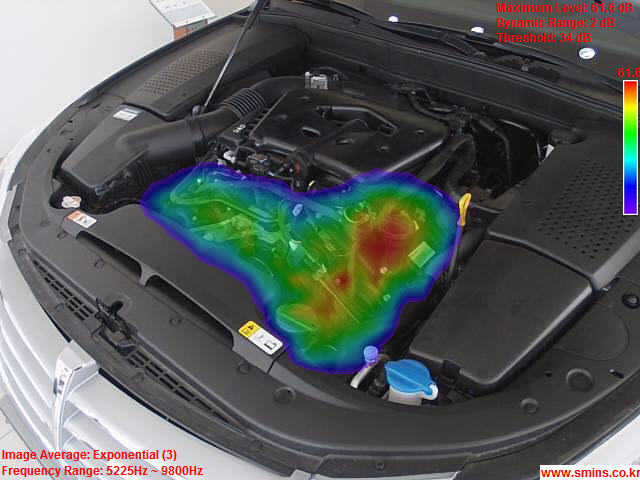 Award Winning Portable Sound Camera Design
- A member of KAIST’s faculty has won the “Red Dot Design Award,” one of three of the most prestigious design competitions in the world, for the portable sound camera.
KAIST’s Industrial Design Professor Suk-Hyung Bae’s portable sound camera design, made by SM Instruments and Hyundai, has received a “Red Dot Design Award: Product Design,” one of the most prestigious design competitions in the world.
If you are a driver, you must have experienced unexplained noises in your car. Most industrial products, including cars, may produce abnormal noises caused by an error in design or worn-out machinery. However, it is difficult to identify the exact location of the sound with ears alone.
This is where the sound camera comes in. Just as thermal detector cameras show the distribution of temperature, sound cameras use a microphone arrangement to express the distribution of sound and to find the location of the sound. However, existing sound cameras are not only too big and heavy, their assembly and installation are complex and must be fixed on a tripod. These limitations made it impossible to measure noises from small areas or the base of cars.
The newly developed product is an all-in-one system resolving the inconvenience of assembling the microphone before taking measurements. Moreover, the handle in the middle is ergonomically designed so users can balance its weight with one hand. The two handles on the sides work as a support and enable the user to hold the camera in various ways.
At the award ceremony, Professor Suk-Hyung Bae commented, “The effective combination of cutting edge technology and design components has been recognized.” He also said, “It shows the competency of the KAIST’s Department of Industrial Design, which has a high understanding of science and technology.”
On the other hand, SM Instruments is a sound vibration specialist company which got its start from KAIST’s Technology Business Incubation Centre in 2006 and earned its independence by gaining proprietary technology in only two years. SM Instruments is contributing to developing national sound and vibration technology through relentless change and innovation. ;
Figure 1: Red Dot Design Award winning the portable sound camera, SeeSV-S205
Figure 2: Identifying the location of the noise using the portable sound camera
Figure 3: The image showing the sound distribution using the portable sound camera
2013.04.09 View 21969
Award Winning Portable Sound Camera Design
- A member of KAIST’s faculty has won the “Red Dot Design Award,” one of three of the most prestigious design competitions in the world, for the portable sound camera.
KAIST’s Industrial Design Professor Suk-Hyung Bae’s portable sound camera design, made by SM Instruments and Hyundai, has received a “Red Dot Design Award: Product Design,” one of the most prestigious design competitions in the world.
If you are a driver, you must have experienced unexplained noises in your car. Most industrial products, including cars, may produce abnormal noises caused by an error in design or worn-out machinery. However, it is difficult to identify the exact location of the sound with ears alone.
This is where the sound camera comes in. Just as thermal detector cameras show the distribution of temperature, sound cameras use a microphone arrangement to express the distribution of sound and to find the location of the sound. However, existing sound cameras are not only too big and heavy, their assembly and installation are complex and must be fixed on a tripod. These limitations made it impossible to measure noises from small areas or the base of cars.
The newly developed product is an all-in-one system resolving the inconvenience of assembling the microphone before taking measurements. Moreover, the handle in the middle is ergonomically designed so users can balance its weight with one hand. The two handles on the sides work as a support and enable the user to hold the camera in various ways.
At the award ceremony, Professor Suk-Hyung Bae commented, “The effective combination of cutting edge technology and design components has been recognized.” He also said, “It shows the competency of the KAIST’s Department of Industrial Design, which has a high understanding of science and technology.”
On the other hand, SM Instruments is a sound vibration specialist company which got its start from KAIST’s Technology Business Incubation Centre in 2006 and earned its independence by gaining proprietary technology in only two years. SM Instruments is contributing to developing national sound and vibration technology through relentless change and innovation. ;
Figure 1: Red Dot Design Award winning the portable sound camera, SeeSV-S205
Figure 2: Identifying the location of the noise using the portable sound camera
Figure 3: The image showing the sound distribution using the portable sound camera
2013.04.09 View 21969 -
 Prof. Jong Chul Ye Appointed as the Editor of IEEE TIP
Professor Jong Chul Ye
KAIST Bio & brain engineering department’s Professor Jong Chul Ye has been appointed as the editor of the "IEEE image processing transactions (IEEE TIP, IEEE Transaction on Image Processing)’, a prominent journal in the sector of imaging and medical image processing.
Professor Ye will act as the editor in the field of medical imaging from February 2013 to January 2016, during which he will participate in examining thesis, establishing the direction of the journal and more.
Professor Jong Chul Ye was recognized for his notable work in the field of medical imaging research using compressed sensing for the development of a high resolution medical image reconstruction techniques. This technique has pioneered a new area that is applicable in magnetic resonance imaging (MRI), computed tomography (CT), positron emission Camcorder (PET) and brain imaging.
On the other hand, “IEEE TIP” was first published in 1992 and is currently the world’s leading authority in the field of image processing, medical imaging, image acquisition, compression and output.
2013.02.21 View 12117
Prof. Jong Chul Ye Appointed as the Editor of IEEE TIP
Professor Jong Chul Ye
KAIST Bio & brain engineering department’s Professor Jong Chul Ye has been appointed as the editor of the "IEEE image processing transactions (IEEE TIP, IEEE Transaction on Image Processing)’, a prominent journal in the sector of imaging and medical image processing.
Professor Ye will act as the editor in the field of medical imaging from February 2013 to January 2016, during which he will participate in examining thesis, establishing the direction of the journal and more.
Professor Jong Chul Ye was recognized for his notable work in the field of medical imaging research using compressed sensing for the development of a high resolution medical image reconstruction techniques. This technique has pioneered a new area that is applicable in magnetic resonance imaging (MRI), computed tomography (CT), positron emission Camcorder (PET) and brain imaging.
On the other hand, “IEEE TIP” was first published in 1992 and is currently the world’s leading authority in the field of image processing, medical imaging, image acquisition, compression and output.
2013.02.21 View 12117 -
 New BioFactory Technique Developed using sRNAs
Professor Sang Yup Lee
- published on the online edition of Nature Biotechnology. “Expected as a new strategy for the bio industry that may replace the chemical industry.”-
KAIST Chemical & Biomolecular engineering department’s Professor Sang Yup Lee and his team has developed a new technology that utilizes the synthetic small regulatory RNAs (sRNAs) to implement the BioFactory in a larger scale with more effectiveness.
* BioFactory: Microbial-based production system which creates the desired compound in mass by manipulating the genes of the cell.
In order to solve the problems of modern society, such as environmental pollution caused by the exhaustion of fossil fuels and usage of petrochemical products, an eco-friendly and sustainable bio industry is on the rise. BioFactory development technology has especially attracted the attention world-wide, with its ability to produce bio-energy, pharmaceuticals, eco-friendly materials and more.
For the development of an excellent BioFactory, selection for the gene that produces the desired compounds must be accompanied by finding the microorganism with high production efficiency; however, the previous research method had a complicated and time-consuming problem of having to manipulate the genes of the microorganism one by one.
Professor Sang Yup Lee’s research team, including Dr. Dokyun Na and Dr. Seung Min Yoo, has produced the synthetic sRNAs and utilized it to overcome the technical limitations mentioned above.
In particular, unlike the existing method, this technology using synthetic sRNAs exhibits no strain specificity which can dramatically shorten the experiment that used to take months to just a few days.
The research team applied the synthetic small regulatory RNA technology to the production of the tyrosine*, which is used as the precursor of the medicinal compound, and cadaverine**, widely utilized in a variety of petrochemical products, and has succeeded developing BioFactory with the world’s highest yield rate (21.9g /L, 12.6g / L each).
*tyrosine: amino acid known to control stress and improve concentration
**cadaverine: base material used in many petrochemical products, such as polyurethane
Professor Sang Yup Lee highlighted the significance of this research: “it is expected the synthetic small regulatory RNA technology will stimulate the BioFactory development and also serve as a catalyst which can make the chemical industry, currently represented by its petroleum energy, transform into bio industry.”
The study was carried out with the support of Global Frontier Project (Intelligent Bio-Systems Design and Synthesis Research Unit (Chief Seon Chang Kim)) and the findings have been published on January 20th in the online edition of the worldwide journal Nature Biotechnology.
2013.02.21 View 13733
New BioFactory Technique Developed using sRNAs
Professor Sang Yup Lee
- published on the online edition of Nature Biotechnology. “Expected as a new strategy for the bio industry that may replace the chemical industry.”-
KAIST Chemical & Biomolecular engineering department’s Professor Sang Yup Lee and his team has developed a new technology that utilizes the synthetic small regulatory RNAs (sRNAs) to implement the BioFactory in a larger scale with more effectiveness.
* BioFactory: Microbial-based production system which creates the desired compound in mass by manipulating the genes of the cell.
In order to solve the problems of modern society, such as environmental pollution caused by the exhaustion of fossil fuels and usage of petrochemical products, an eco-friendly and sustainable bio industry is on the rise. BioFactory development technology has especially attracted the attention world-wide, with its ability to produce bio-energy, pharmaceuticals, eco-friendly materials and more.
For the development of an excellent BioFactory, selection for the gene that produces the desired compounds must be accompanied by finding the microorganism with high production efficiency; however, the previous research method had a complicated and time-consuming problem of having to manipulate the genes of the microorganism one by one.
Professor Sang Yup Lee’s research team, including Dr. Dokyun Na and Dr. Seung Min Yoo, has produced the synthetic sRNAs and utilized it to overcome the technical limitations mentioned above.
In particular, unlike the existing method, this technology using synthetic sRNAs exhibits no strain specificity which can dramatically shorten the experiment that used to take months to just a few days.
The research team applied the synthetic small regulatory RNA technology to the production of the tyrosine*, which is used as the precursor of the medicinal compound, and cadaverine**, widely utilized in a variety of petrochemical products, and has succeeded developing BioFactory with the world’s highest yield rate (21.9g /L, 12.6g / L each).
*tyrosine: amino acid known to control stress and improve concentration
**cadaverine: base material used in many petrochemical products, such as polyurethane
Professor Sang Yup Lee highlighted the significance of this research: “it is expected the synthetic small regulatory RNA technology will stimulate the BioFactory development and also serve as a catalyst which can make the chemical industry, currently represented by its petroleum energy, transform into bio industry.”
The study was carried out with the support of Global Frontier Project (Intelligent Bio-Systems Design and Synthesis Research Unit (Chief Seon Chang Kim)) and the findings have been published on January 20th in the online edition of the worldwide journal Nature Biotechnology.
2013.02.21 View 13733 -
 Professor Shin In Shik First in Asia to receive Excellent Dissertation Award from IEEE RTSS
The research team lead by Professor Shin In Shik (Department of Computer Science) received the Excellent Dissertation Awardy in the IEEE RTSS out of 157 dissertations.
It is the first time a Professor under an institute in the Asia region received the Award in the RTSS field during its 33 year history.
Professor Shin had already received an Excellent Dissertation Award as a Ph.D. candidate at the University of Pennsylvania. Thus Professor Shin became the first and only scientist to receive the Award twice.
Professor Shin has successfully defined the scheduling method of the multicore processor which was regarded as the problem in the field of RTSS for the past decade.
Professor Shin has suggested new criteria for sorting real time tasks in parallel thereby suggesting a new scheduling method that surpasses current scheduling methods. The results are anticipated to provide new perspectives in the field of RTSS using multicore processors.
2013.01.22 View 9917
Professor Shin In Shik First in Asia to receive Excellent Dissertation Award from IEEE RTSS
The research team lead by Professor Shin In Shik (Department of Computer Science) received the Excellent Dissertation Awardy in the IEEE RTSS out of 157 dissertations.
It is the first time a Professor under an institute in the Asia region received the Award in the RTSS field during its 33 year history.
Professor Shin had already received an Excellent Dissertation Award as a Ph.D. candidate at the University of Pennsylvania. Thus Professor Shin became the first and only scientist to receive the Award twice.
Professor Shin has successfully defined the scheduling method of the multicore processor which was regarded as the problem in the field of RTSS for the past decade.
Professor Shin has suggested new criteria for sorting real time tasks in parallel thereby suggesting a new scheduling method that surpasses current scheduling methods. The results are anticipated to provide new perspectives in the field of RTSS using multicore processors.
2013.01.22 View 9917 -
 Professor Lee Jeong Yong Receives 2012 'KAISTian of the Year' Award
Professor Lee Jeong Yong (Department of Material Science and Engineering) received the 2012 ‘KAISTian of the Year’ Award.
Professor Lee had successfully developed a technique that allowed the observation and analysis of liquid in atomic scale.
The technique is expected to have great impact on nano-material synthesis in solution, explaining electrode and electrolyte reaction, liquid and catalysis reaction research, and etc. and was therefore named as the best experimental accomplishment in KAIST in 2012.
Professor Lee and his team’s finding has been published in the April edition of Science magazine and has had attracted the attention of the world. In addition, BBC News, and Science & Environment reported on the findings as their respective top articles.
The optical microscope is incapable of atomic scale observation and the electron microscopes are capable but because of the vacuum state all liquids undergo evaporation making it impossible to observe liquids in an atomic scale.
Professor Lee’s team wrapped the liquid with a layer of grapheme to prevent evaporation and successfully observed real time the platinum growth process in solution.
Professor Lee’s findings were introduced as an example of exemplar research case in the Presidential address for ‘Science Day’ in April.
2013.01.22 View 10910
Professor Lee Jeong Yong Receives 2012 'KAISTian of the Year' Award
Professor Lee Jeong Yong (Department of Material Science and Engineering) received the 2012 ‘KAISTian of the Year’ Award.
Professor Lee had successfully developed a technique that allowed the observation and analysis of liquid in atomic scale.
The technique is expected to have great impact on nano-material synthesis in solution, explaining electrode and electrolyte reaction, liquid and catalysis reaction research, and etc. and was therefore named as the best experimental accomplishment in KAIST in 2012.
Professor Lee and his team’s finding has been published in the April edition of Science magazine and has had attracted the attention of the world. In addition, BBC News, and Science & Environment reported on the findings as their respective top articles.
The optical microscope is incapable of atomic scale observation and the electron microscopes are capable but because of the vacuum state all liquids undergo evaporation making it impossible to observe liquids in an atomic scale.
Professor Lee’s team wrapped the liquid with a layer of grapheme to prevent evaporation and successfully observed real time the platinum growth process in solution.
Professor Lee’s findings were introduced as an example of exemplar research case in the Presidential address for ‘Science Day’ in April.
2013.01.22 View 10910